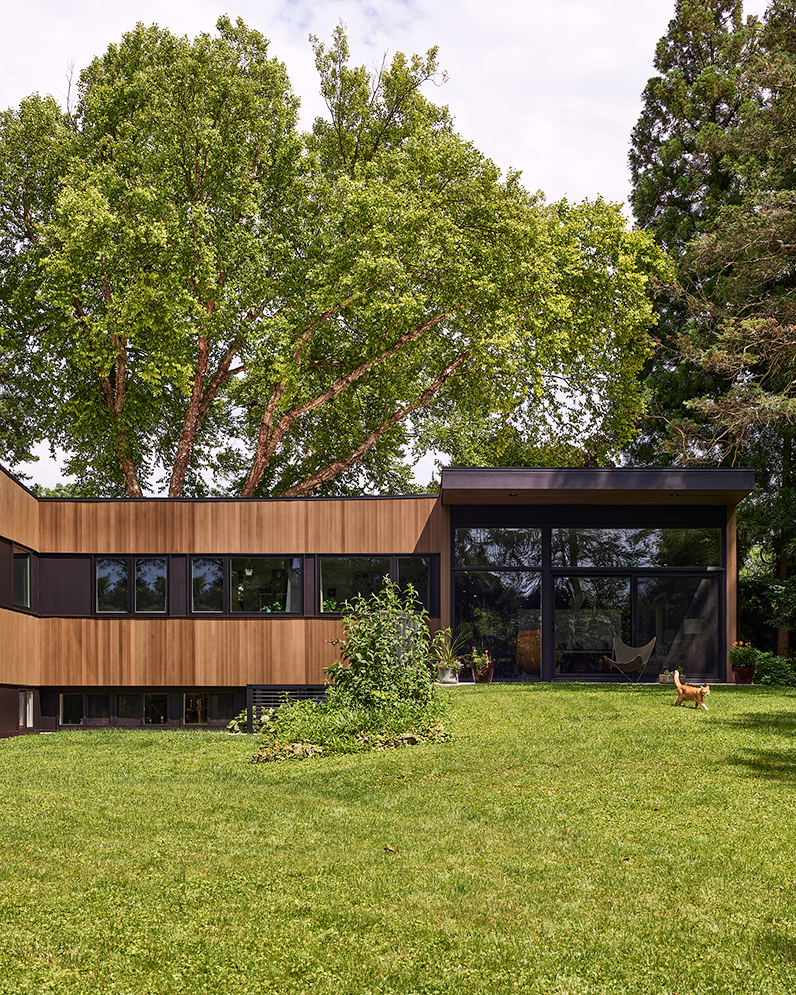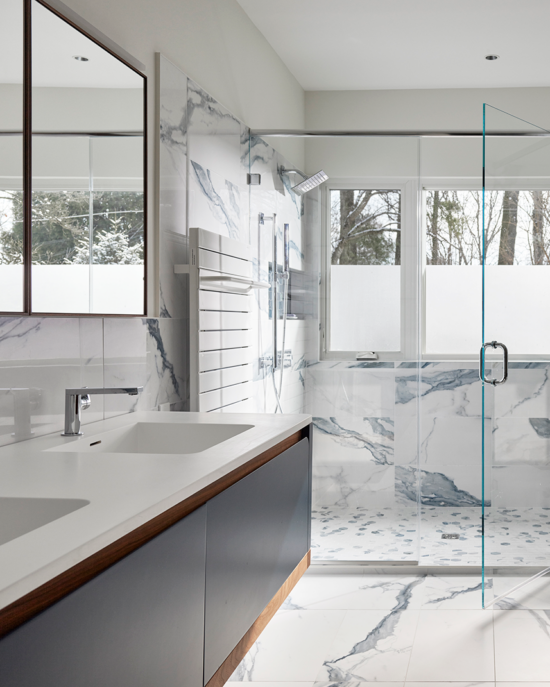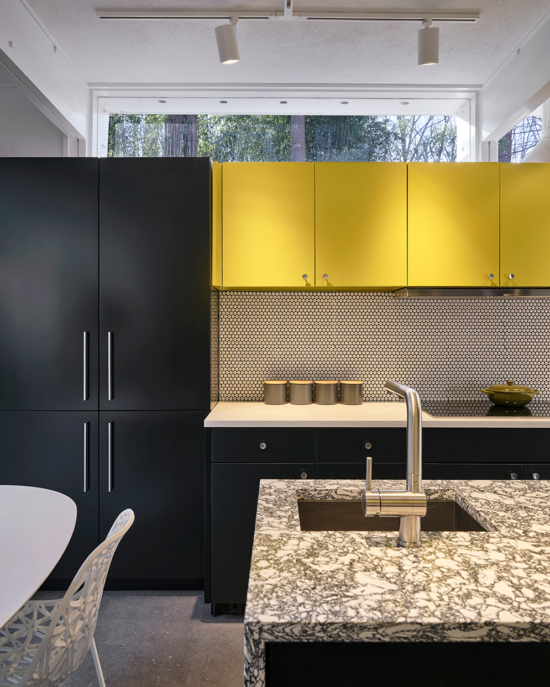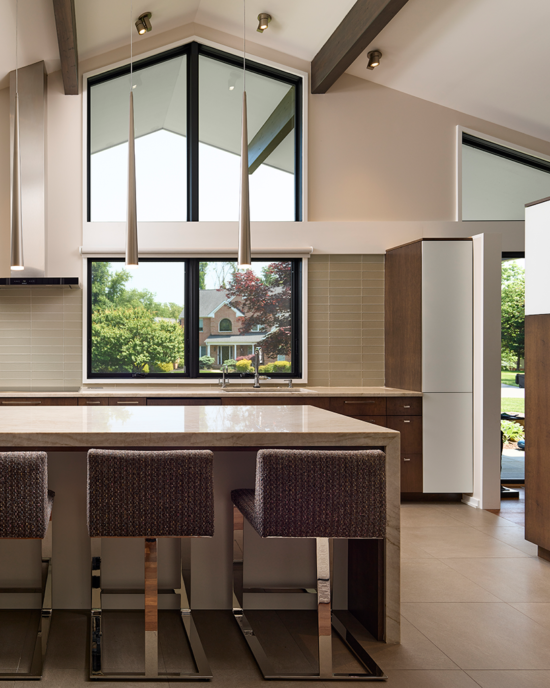When a family of four found a mid-century modern home for sale, they were immediately drawn to its history. This three-bedroom, two-bath house was originally designed in 1956 by the New York-based modernist architect William Landsberg, who studied under and worked with famed architects Marcel Breuer and Walter Gropius. The house was poorly renovated in 2005, straying from the intended design. In 2006, the home’s new owners saw its deep mid-century roots and knew they would one day restore it to its original character.
In 2022 the time had finally come to renovate. The mission was to strengthen the house’s legacy by restoring its interior and exterior to an aesthetic that’s faithful to the original architect’s design intent. The project included the renovation of the home’s kitchen, primary bedroom, bathroom and garage; and on the exterior, the windows, doors, siding and other design details were replaced to reflect the original mid-century style.
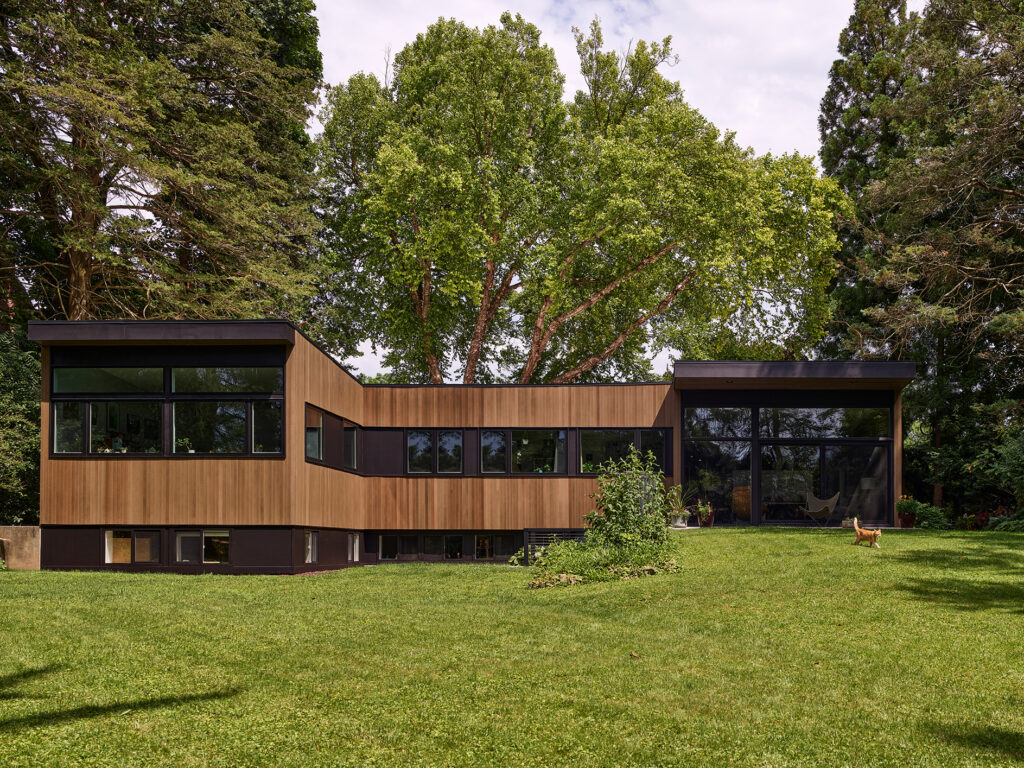
The 21st century lifestyle is different from that of the 1950s, so this renovation provided an opportunity for the design team to make improvements that reflect today’s needs and preferences while still serving as stewards of the original design and maintaining the mid-century modern essence. The original kitchen had been closed off and now opens to the adjacent dining room, with a peninsula and counter seating in between. In the kitchen, new large format slate tiles compliment the original stone flooring in the dining room.
The house is sited on a large sloping lot. A welcoming courtyard is punctuated by the front door’s pop of color – another hallmark of mid-century modern design – and terraces that extend from the rear of the house. New windows that are now operable and larger than the originals, as well as sliding doors enhance the renovated home’s openness and connect the indoor and outdoor living spaces. The surrounding landscape is also reflected in the updated materials, including natural woods, stone and glass.
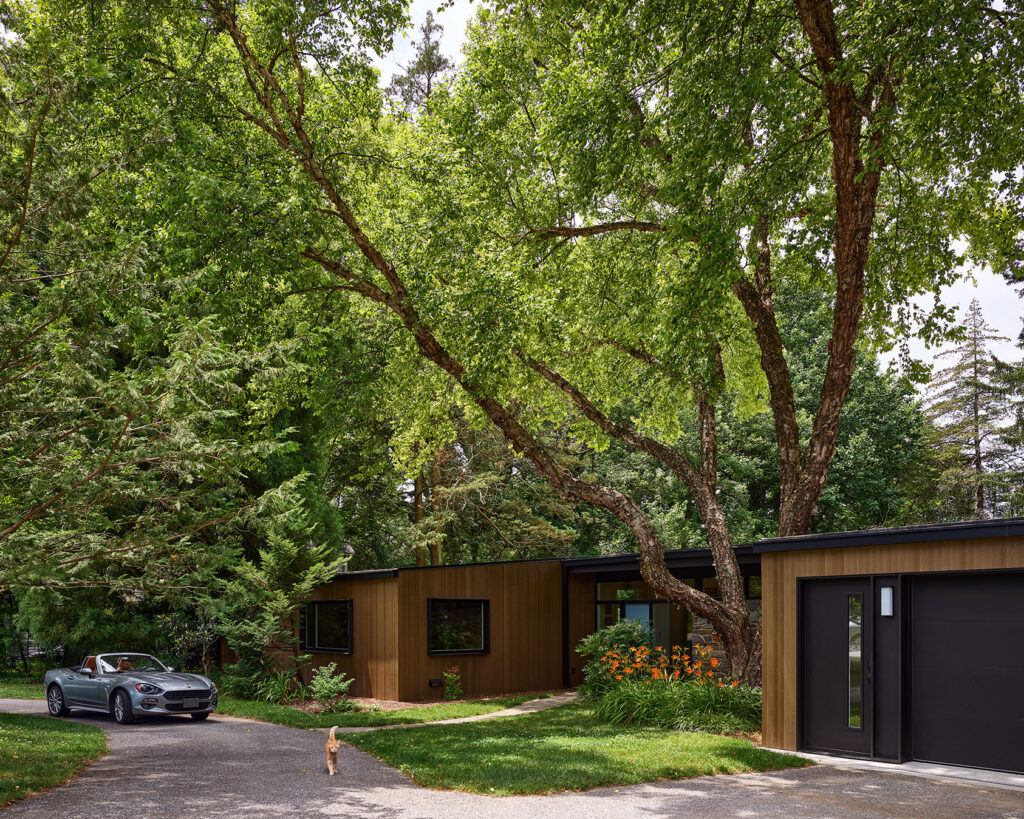
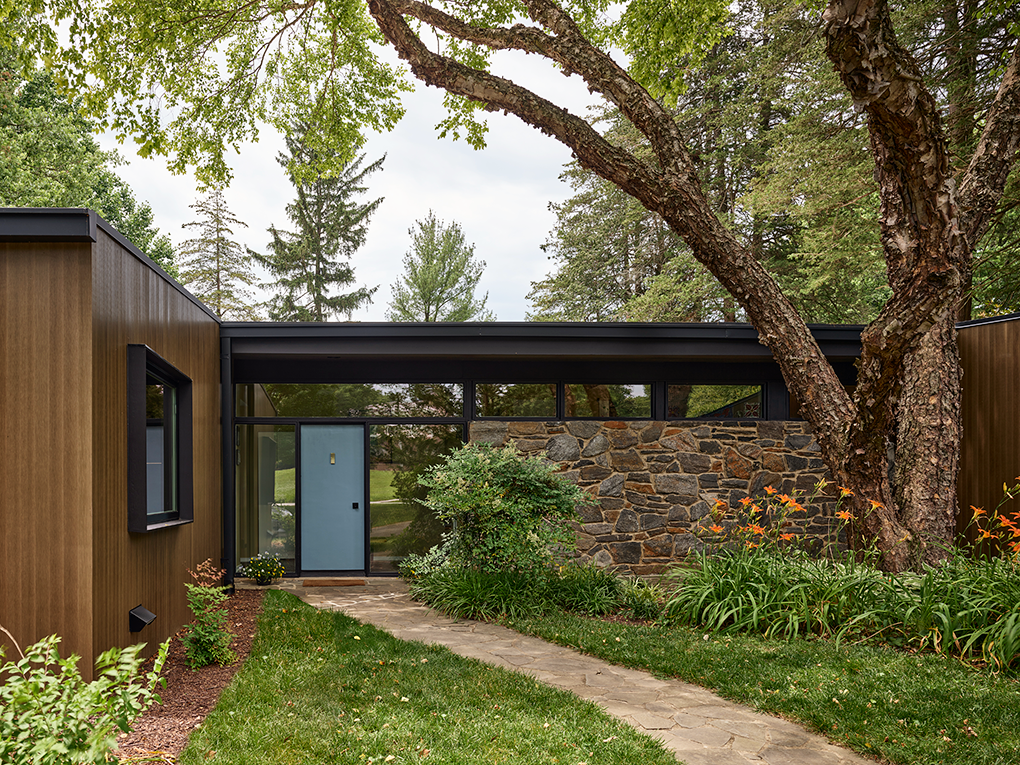
In its original state, the exterior of the house featured vertical cedar siding, much of which had been covered by a stucco finish during the 2005 renovation. During this most recent restoration, the stucco panels were removed and the old cedar siding, which had decayed, was used as sheathing for the new siding. A new composite stained siding, made from rice hulls and recycled plastic, was selected to closely resemble the original tongue-and-groove cedar while minimizing long-term maintenance. The original wood trim was also replaced with a fly ash material, corresponding with the new, larger windows and updated doors.
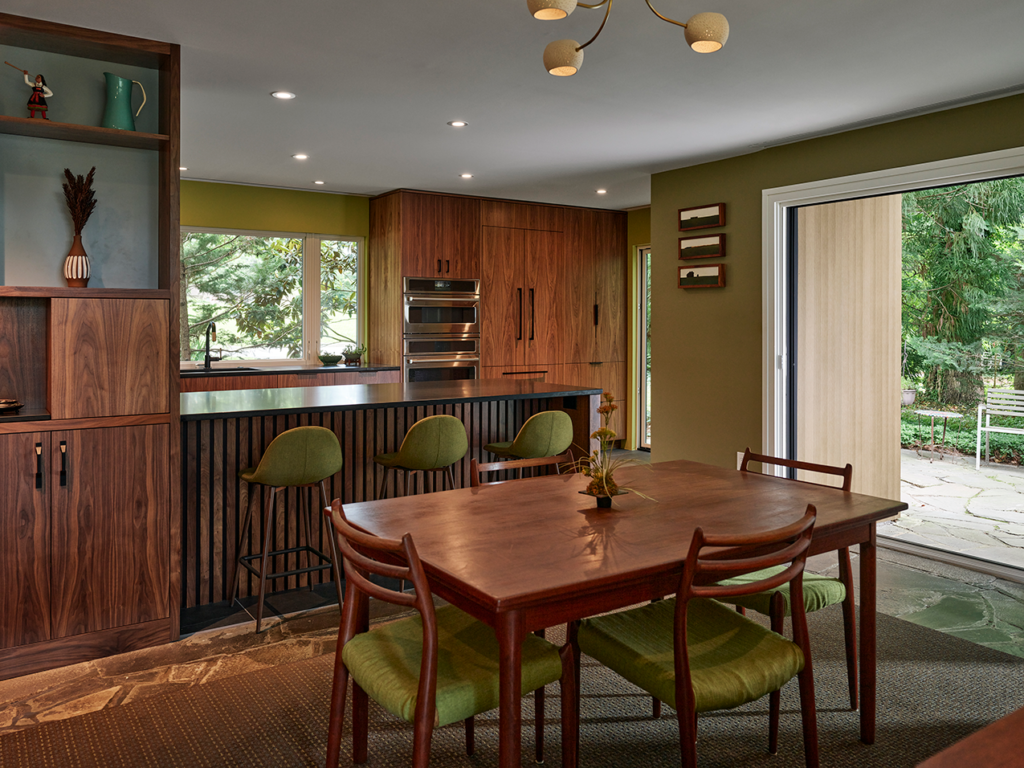
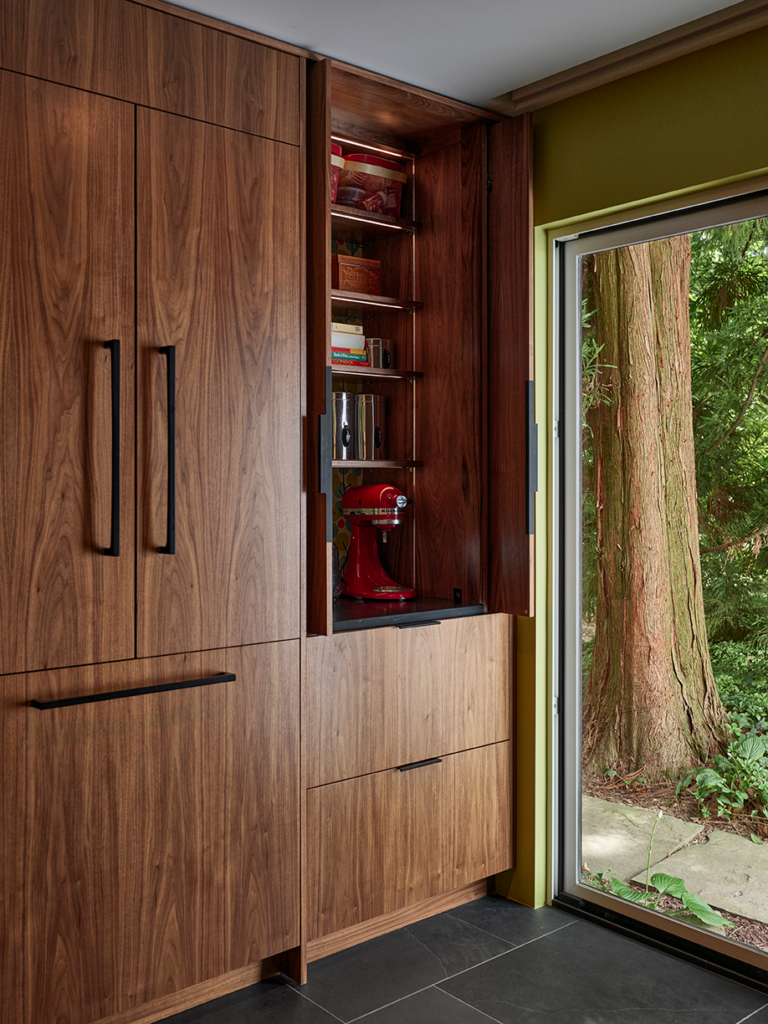
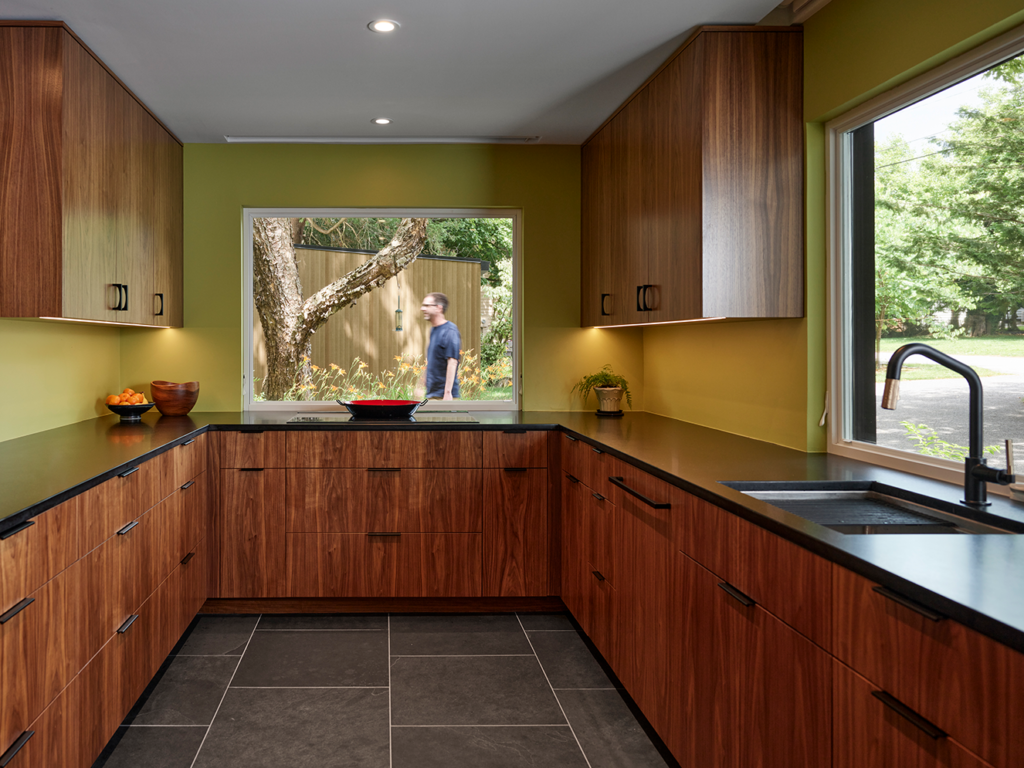
Evoking a serene, earthy quality, the exterior color palette includes dark trim, green-gray stained siding and natural stone on the front facade. The updated interior similarly features walnut cabinets, slate flooring, and accents of green and gray, including vertical floor-to-ceiling tile in the renovated bathroom. Each design element was selected with long-term sustainability in mind, including energy efficient windows, doors and appliances.
Baltimore Magazine Home & Design Award for Midcentury Modern Renovation, 2025
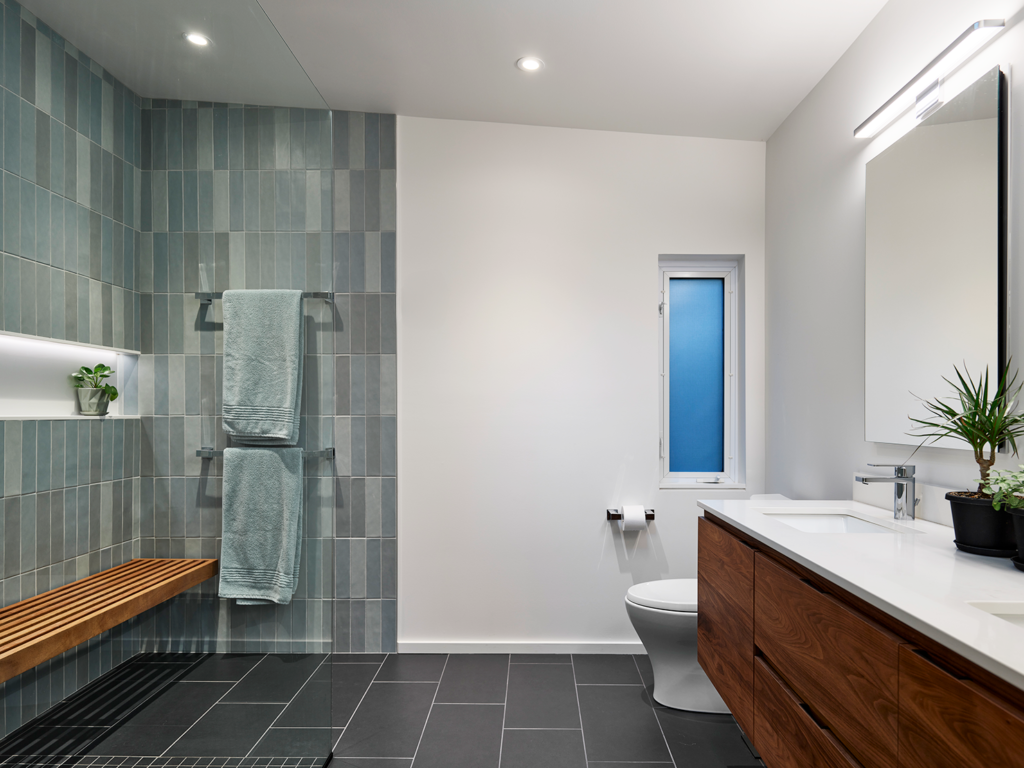
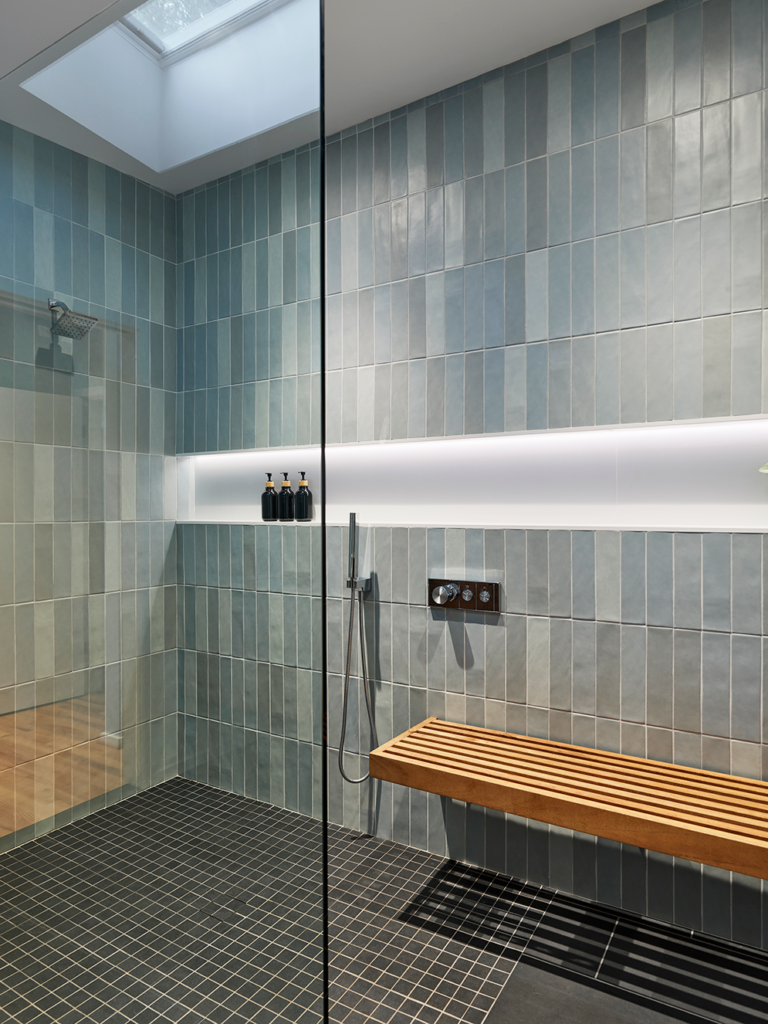
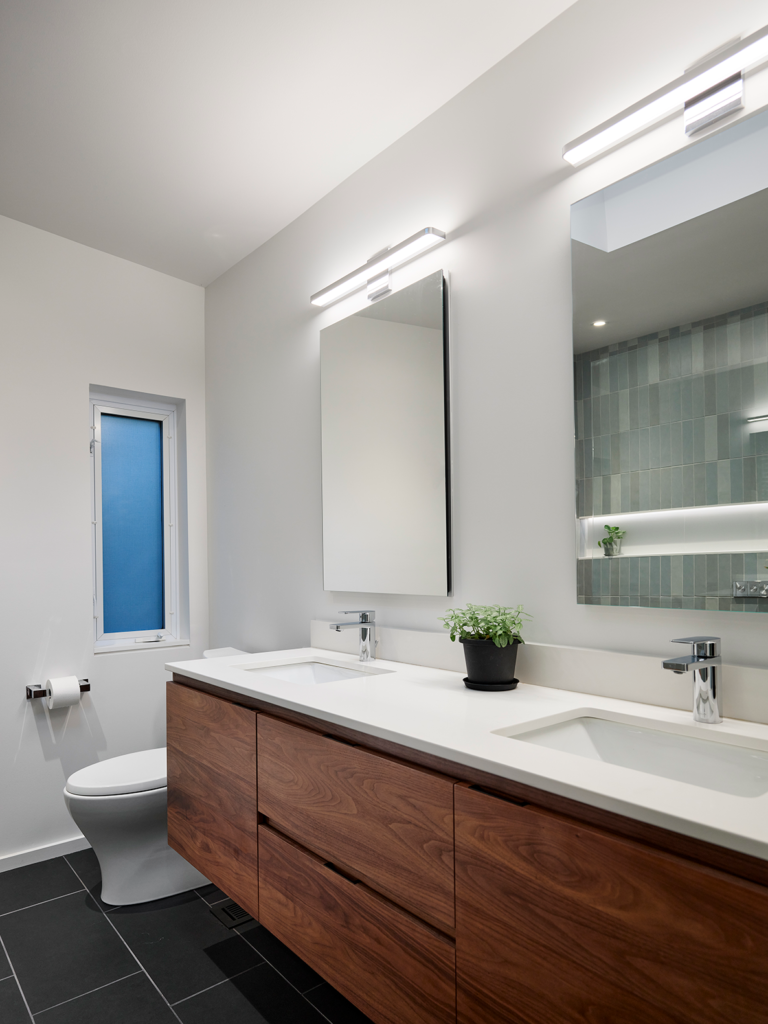
architect • Place Architecture:Design
contractor • Greenleaf Construction
kitchen cabinetry • CustomFit Cabinetry
photography • Tom Holdsworth Photography

